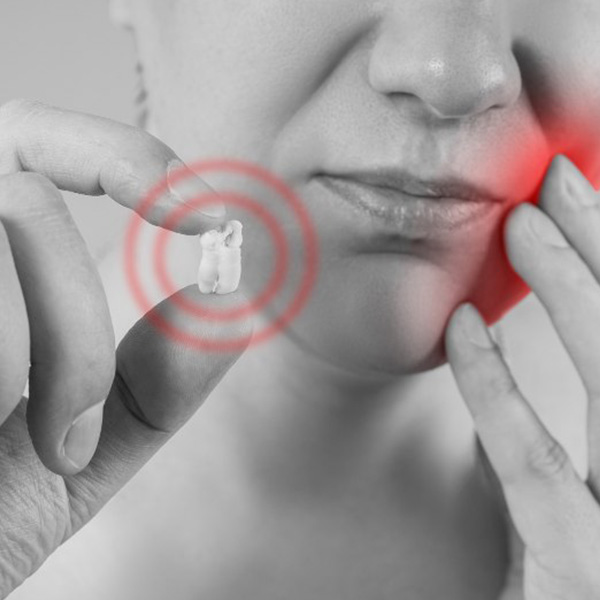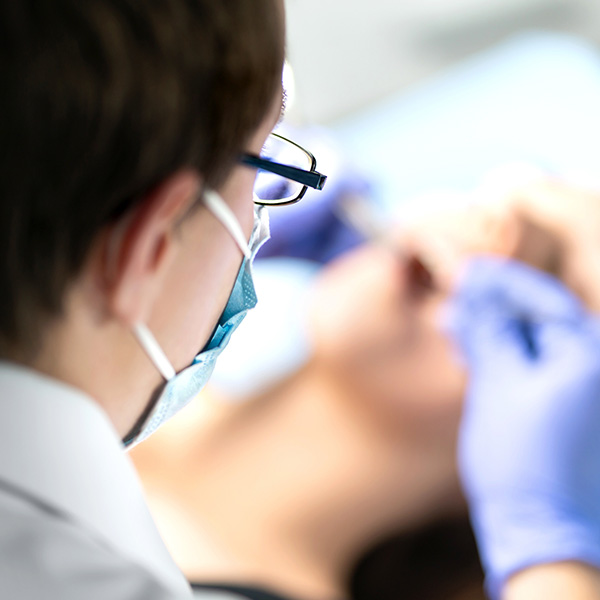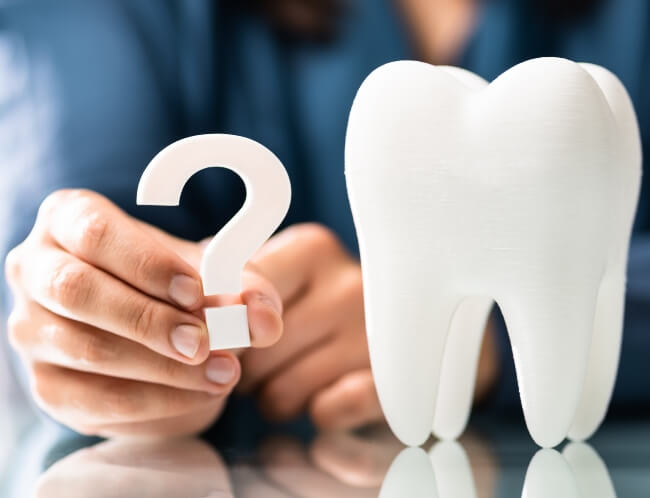Tooth Extractions in Beverly HIlls CA
Our Patient-Focused Approach to Dental Extraction
Usually, a patient’s teeth can be saved with a simple treatment or procedure. However, there are some instances where a tooth or teeth are beyond repair and require tooth extractions in Beverly Hills, CA. At S&C Dental Beverly Hills, our mission is to make the tooth removal process as smooth as possible when the tooth cannot be saved. Extractions and removals are performed to relieve pain and save other parts of the mouth that may be affected by the diseased, decayed, or infected tooth. We take strict safety precautions and accommodate you to ensure you are most comfortable. Removing teeth is a last resort, but it doesn’t need to be painful. Our team is dedicated to patient comfort and will provide removals to quickly get you back to your daily life.

What’s Extracting a Tooth Like?
Firstly, we’d like you to know that we only perform extractions when we are certain other treatments will be ineffective. We determine this by providing patients with comprehensive exams and x-ray inspections. If an extraction is necessary, we will develop a plan to remove it without affecting other areas of the mouth. During the procedure, we numb the targeted area with a local anesthetic to make you feel comfortable and relaxed. Then, we carefully make a small incision in the gum and pull the tooth.

What Happens After the Procedure?
Our team will provide you with several options for after-care practices. These practices will help you clean the affected area, relieve post-procedure pain or discomfort, and reduce the risks of infection. We will also advise you on dietary and activity restrictions and how long you should keep them up before resuming your routine. Do you want to replace one or more missing teeth after a removal? We will gladly provide you with a wide selection of:
Tooth Extraction FAQ
At S&C Dental Beverly Hills, we understand the importance of providing comprehensive dental care that caters to the needs of our diverse patient base. From your child’s first dental exam to rejuvenating treatments for years of wear, our goal is to ensure every patient leaves with a healthier, more beautiful smile. Our team of professionals is equipped with the latest dental technology and continuously updates their skills to offer the best oral healthcare. We pride ourselves on our patient-focused approach, especially when it comes to procedures like tooth extractions. While saving a tooth is always our priority, there are times when extraction is necessary for the overall health of your mouth. Below, we’ve compiled a list of frequently asked questions to help you understand more about tooth extractions at our Beverly Hills, CA practice.
What is a tooth extraction and why is it necessary?
Tooth extraction involves removing a tooth from its socket in the jawbone. It’s necessary when a tooth is too damaged or decayed to be repaired, or to alleviate overcrowding, prevent or treat infection, or address gum disease.
How do I know if I need a tooth extraction?
You may need an extraction if you have severe tooth decay, advanced gum disease, overcrowded teeth, or damaged teeth that cannot be repaired. Regular checkups can help determine if an extraction is necessary.
What are the different types of tooth extractions?
There are two primary types: simple extractions, where the tooth is removed without surgery, and surgical extractions, requiring an incision into the gum. The method used depends on the tooth’s condition and position.
Is a tooth extraction painful?
No, the procedure itself is not painful, as we use local anesthesia to numb the area. You may feel pressure but should not experience pain during the extraction.
What is the recovery process like after a tooth extraction?
Recovery typically involves a few days of rest and limited activity. You may experience swelling and mild discomfort, which can be managed with pain relief medication and cold compresses.
Are there any risks or complications associated with tooth extractions?
While tooth extractions are generally safe, potential risks include dry socket, infection, and damage to nearby teeth or jawbone. Following post-care instructions reduces these risks.
How much does a tooth extraction cost?
The cost varies based on the complexity of the extraction and whether additional procedures are required. We offer transparent pricing and can discuss costs and payment options during your consultation.
Do I need to do anything to prepare for a tooth extraction?
We recommend avoiding eating or drinking for a few hours before your appointment if you’ll be receiving general anesthesia. We’ll provide specific instructions based on your individual case.
Are there alternatives to tooth extraction?
Depending on the issue, alternatives may include fillings, crowns, root canals, or gum disease treatment. We explore all possible alternatives before recommending extraction.
How soon can I eat and drink after a tooth extraction?
You can eat and drink after the local anesthetic wears off, but stick to soft, cool foods and avoid using a straw for the first 24 hours to protect the clot that forms in the socket.
Can I drive home after a tooth extraction?
If you’ve had local anesthesia only, you may be able to drive. However, if you’ve been sedated or received general anesthesia, you’ll need someone to drive you home.
How long does it take for the extraction site to heal completely?
Healing times vary; the initial healing phase typically takes 1-2 weeks, with complete healing of the bone and gums occurring over the next few months.
What should I do if I experience severe pain or bleeding after an extraction?
Contact us immediately if you experience severe pain, excessive bleeding, or signs of infection such as fever, chills, or swelling.
How are teeth extracted?
We numb the area with a local anesthetic and use specialized instruments to loosen and remove the tooth. If surgical removal is necessary, we may provide IV sedation.
Will I be able to hear what the dentist is doing?
During a traditional extraction, you may hear noises, but they should not cause pain. We strive to make the process as comfortable as possible and can offer solutions for those sensitive to noise.
Can tooth extraction help with orthodontic treatment?
Yes, tooth extraction can play a crucial role in orthodontic treatment for some patients. Removing one or more teeth may be necessary to create space in a crowded mouth, allowing the remaining teeth to be properly aligned. This can improve the overall effectiveness of braces or other orthodontic treatments and contribute to a healthier bite and more visually appealing arrangement of the teeth.
Will I need to replace the extracted tooth?
In many cases, it is advisable to replace an extracted tooth to avoid potential issues like shifting teeth, bite problems, and bone loss in the jaw where the tooth was located. Options for replacement include dental implants, bridges, or partial dentures. We will recommend the best option based on your individual needs, health, and preferences.

How should I care for the extraction site to promote healing?
To promote healing after an extraction, follow these steps:
- Avoid rinsing, spitting, or sucking actions for the first 24 hours to protect the blood clot in the socket.
- After 24 hours, gently rinse your mouth with warm salt water several times a day to reduce swelling and disinfect the area.
- Continue to brush and floss your teeth, avoiding the extraction site for the first few days.
- Eat soft foods and gradually reintroduce solid foods as the extraction site heals.
- Avoid smoking and drinking through a straw, as these actions can disrupt the healing process.
How often should I follow up with my dentist after an extraction?
We will typically schedule a follow-up appointment about a week after the extraction to ensure the site is healing properly and to remove any stitches if necessary. Further checkups may be advised depending on your specific situation and how well the extraction site is healing. Always follow our recommended schedule for follow-up visits.
Can children undergo tooth extractions?
Yes, children can undergo tooth extractions. Common reasons for extracting a child’s tooth include severe decay, infection, and issues related to losing baby teeth and the eruption of permanent teeth. Pediatric dentists are specially trained to handle tooth extractions for children and do so with techniques aimed at minimizing discomfort and anxiety for the child.
Schedule Your Appointment Today
For any further questions or to schedule a consultation appointment, please contact S&C Dental Beverly Hills. Our team is dedicated to ensuring your comfort and providing the highest standard of care throughout your tooth extraction process. We look forward to helping you achieve a healthier, more beautiful smile. So, if you are experiencing any issues with your teeth, do not hesitate to contact us for personalized and expert care at our practice. Remember, your oral health is as important as your overall well-being!
